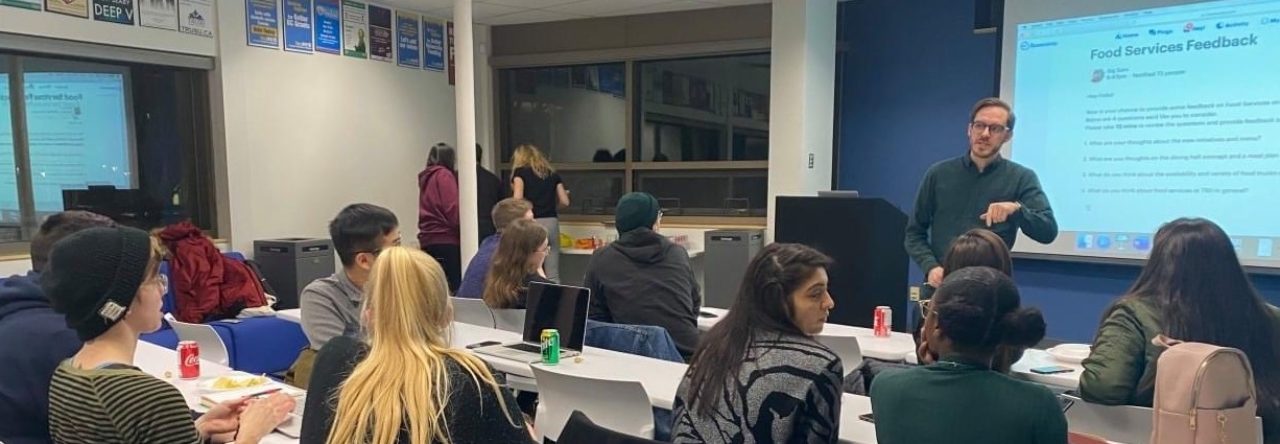On July 29, 2020, I taught, with my teaching partner, my ninth one-hour lesson with a group of four students enrolled in an Advanced Oral Communication class. The objective of this lesson was that students would be able to use functional language to request service, assistance, or accommodations, particularly in the context of university life. This was to be accomplished through brainstorming requests they might make in their experience at university; identifying definitions for vocabulary terms used in student requests; practicing given requests with increasing demands to generate language; and, finally, presenting self-created role-play requests for campus services, assistance, and accommodations. This lesson was highly successful.
In preparing the lesson plan, we really hit our stride on many of the aspects that we had been iteratively struggling with and improving. This started from the most important take-away from the practicum: a clear, focused objective. From this objective we were able to organize a series of activities with strong scaffolding – setting expectations and engaging students in thinking about real context for the target function, establishing necessary language, and moving from controlled to open production. We generated materials that were authentic, highly integrated, and at an appropriate language level. With a focused objective and related activities we were also able to establish clear areas and opportunities for assessment. Finally, the activities were relevant to students who identified many of the planned scenarios in their brainstorm. The functional, and even specific, language can be applied in their life, and they had requested this type of lesson earlier in the semester. Having delivered this lesson plan – likely our best to date – there are a few things I would change. I would focus the vocabulary exercise on more functional language rather than situation-specific terms as it would have more value for the objective and students’ future use. Further, I would provide more visual aids during the dialogue practices as materials were all in the “Shared Notes” function of the online platform and fairly text heavy. Finally, it may be useful to add peer evaluation to the final role-poly presentation in addition to the comprehension questions we asked. For example, I could ask: were they polite? Was a clear request made? Did they exchange needed information? What could they improve? This would help students think more deeply about the function.
In delivering the lesson, I was well organized and confident based on the lesson plan. A key success was in time management. Because our activities were focused and integrated, we maintained a consistent momentum and engaged fully in each activity within the planned time. The strong structure also gave me the freedom to adapt the lesson content to the strength of the students. For example, we had dialogues prepared with increasing gap fills and suggested terms, and I took away the suggested terms early when students showed they could perform without them. Another previous weakness that we improved was teacher talk. We limited this through seamless activities that required less explanation, although I maintained an explanation of good requests (polite, clear, exchanging info) that I’m unsure was valuable. It could have been left implicit. I also maintained my good relationship with students, and I think they enjoyed the lesson. On the other hand, there were a few challenges and areas for improvement. Minor issues were that I forgot to record the class for review and that I tried to have students turn their cameras on from the beginning but failed. I didn’t want to slow down the class or stall momentum at the time, and student did have cameras on for most of the lesson. More significantly, I am still figuring out how to best provide error correction for communicative or functional purposes as it’s not as clear cut as for accuracy. For example, I tried to give direction for inflection, but didn’t have simple language ready. I suggestion from my practicum supervisor was to focus on one error correction item at a time. This can be based on diagnosis of students early in the term and continued correction of a common item over multiple lessons.
Overall, I was very pleased with this lesson as a culmination of a number of improvements. I will learn the benefits of not overthinking a lesson objective or the necessity for multiple activities. I appreciate more than ever the value of focusing on preparing highly focused, relevant, and integrated content for limited activities, and of being able to engage fully and deeply in these activities without rushing or shifting abruptly to new activities and explanations.


Leave a Reply